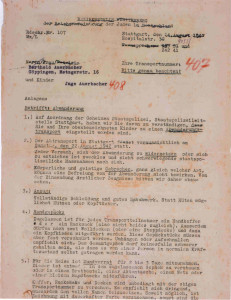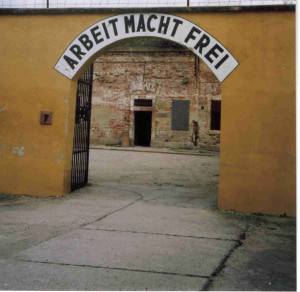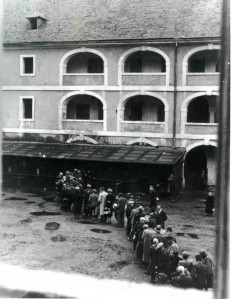
Inge and her parents were sent to a cramped attic in one of the barracks. Later, they were moved to a section of Terezin reserved for disabled war veterans. The rooms were cramped, smelly and freezing in the winter, and for meals they had to assemble in long lines in the outdoor courtyard of the barracks. Breakfast was a sludgy, horrible tasting coffee, lunch consisted of watery soup, a potato and a few slices of turnip and dinner was more soup. Each week the family received a ration of bread, and struggled to make it last the week. Water was pumped from wells, many of them contaminated. Infestations of rats, fleas and bedbugs were widespread, disease was rampant, and epidemics broke out constantly. Inge was sick most of the time, beginning with the scarlet fever she contracted soon after arrival. She lay in the infirmary for four months, surviving many complications against all odds. After recovering from scarlet fever, Inge suffered from measles, mumps, a double ear infection and dysentery. She also suffered from head lice, and boils that erupted all over her body. When Inge was finally released, her hair was cut short and her scalp washed in disinfectant in an attempt to remove the lice. Her case was far from unusual, as most of the children were sick the majority of the time they were in Terezin.

Inge lived with her parents for most of her time in the camp, and since she was a German child in a population of primarily Czech Jews, there were few opportunities for learning or pursuing the arts. She often felt isolated from the Czech population, who tended to exclude the German Jews. Still, she did receive lessons from brave teachers who secretly taught children a variety of subjects from memory in attics or other places they could find some space. During our conversation, Inge reminded me that though art was created in Terezin, that does not mean that prisoners of Terezin were privileged. Some people tend to focus only on the art and theatrical productions and forget that the conditions in Terezin were as terrible as those in any ghetto, with starvation, disease and the constant fear of being transported East. Inge’s autobiography very clearly depicts the truly horrific conditions in Terezin, which we must not forget.

Further Reading:
Books by Inge Auerbacher (available on Amazon)
I Am a Star: Child of the Holocaust
Beyond the Yellow Star to America
www.ingeauerbacher.com